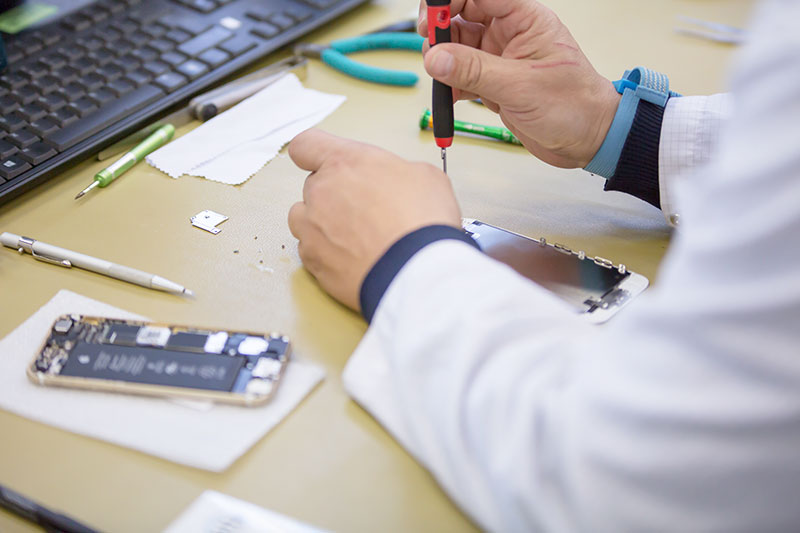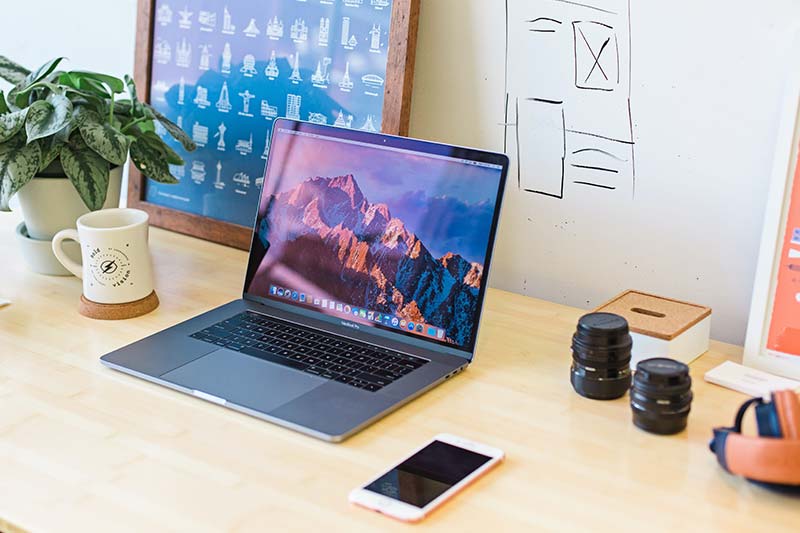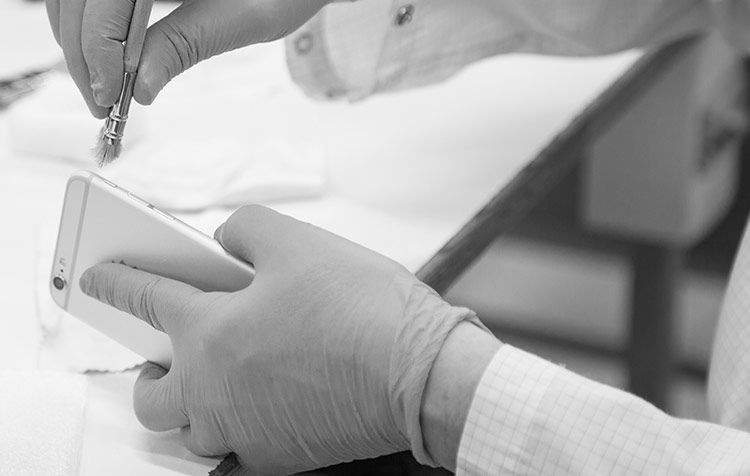You want to know what Refurbished means? Then you've come to the right place! Does this situation sound familiar to you: on the one hand, you would like to buy a new electronic device, but on the other hand, you are trying to a waste-avoiding lifestyle to maintain and avoid superfluous new purchases? You're not alone in these thoughts, as many tech lovers find themselves in this predicament. Luckily, there's a modern way to balance sustainability and tech: Refurbishing.
You come across this term more and more often, especially when searching for electronic devices on the Internet. But what does this term actually mean, what is behind the principle of refurbished and above all: is refurbishing a good alternative to buying new? I will answer these and other questions in this article.
Here is another short Table of contents for you:
The meaning of refurbished
Anything that is called refurbished really just means that it is is a used device, the defects of which have been eliminated. The reason why it is no longer used by the original owner can be very diverse. Perhaps it is externally damaged or it is a demonstration device from a specialist retailer. It is also possible that the buyer changed his mind after the purchase and returned the device to the manufacturer.
The manufacturers themselves or so-called Refurbisher workshops specialize in the reconditioning of electronic equipment. They perform necessary repairs and resell the products after passing tests. The external defects, such as micro-scratches, of course, must be mentioned in the description of the sale. This way, the buyer knows what external condition the device is in.
Refurbished - What does quality assurance look like?

The refurbisher workshops play a major role in quality assurance. A team of experts inspects and thoroughly tests each productbefore it is sent to the buyer. In the so-called "audit process", the devices are reprocessed step by step - from cleaning, through data erasure, to hardware testing.
At "Back Market", for example, we only work with selected companies that participate in Strictly defined standards have to keep. In addition, even when purchasing refurbished goods, there is the legal warranty claim of at least one yearso that the buyer is covered in the event that not everything works perfectly. However, we also offer a three-year guarantee to keep you competitive with a new purchase.
You should always make sure when buying repaired and remanufactured equipment that you are using the Try product for at least 30 days can. If this is not the case, the provider is not particularly reputable.
What are the quality levels?
Refurbished technology is basically divided into four different quality levels. I would like to briefly explain these here:
- Demoware: Before sale only rarely used and therefore mostly flawless technology, which acted, for example, as exhibits at trade fairs.
- Used A-goods: Previously used and professionally reconditioned technology, with maximum slight signs of use.
- New goods special item: Often still original, perfectly packaged products that have only lost their manufacturer's warranty due to a long storage time. You still get warranty.
- Used B-goods: Flawlessly functioning technology that only shows slightly more noticeable signs of use and is thus available at an even lower price.
Advantages of refurbishing compared to new goods
What exactly is the connection between refurbishing and sustainability? And what other advantages do refurbished devices have over new ones? In the following, I will explain two very decisive advantages.
Resource-saving
By recycling, refurbishing or repairing products (whether smartphones, clothes or other items), the life cycle of the product is automatically extended. This extension leads to waste being minimized and e-waste being reduced. This is also referred to as Circular Economy. It is the counterpart of the linear economy, also Throwaway Society called, which focuses on buying fast and throwing away fast.
The recurring new product launches of Apple are a good example of how consumers are literally "pushed" into new technology every year, even though their devices are still functioning optimally.
Which point should not go unmentioned with regard to resources is the Use of rare earths and critical metals in the manufacture of devices such as smartphones or laptops. That's why it's all the more important to prolong the life of electronic devices as much as possible and to question one's own purchasing decisions.
The sparing natural resources is therefore a significant advantage of technology that is refurbished.
Tip: Devices cannot always be reused and repaired. In the linked article you will learn how to Dispose of electronic waste correctly.
More favorable
As soon as a product is removed from its packaging, it is no longer a new device. Consequently, it loses a large part of its value as new - even if it is actually still "like new is. If you decide to purchase a refurbished device, you can save up to 70 percentwithout sacrificing quality. The price is based, among other things, on what you expect from the aesthetics of a device. From "like new" to "good" to "used". If you don't care that a laptop or smartphone has a few micro-scratches on the outside of the case, then refurbishing can help you to save money. Save money sustainably.
Since everyone has different requirements for their device, it is ultimately a very personal decision. However, the fact is: It is always cheaper to buy a refurbished device than a new one. This is a significant advantage of technology that is "like new".
What items can you buy refurbished?

Basically, you can refurbish everything: Cell phones, laptops, vacuum cleaners, consoles, tablets, fans, drills, AirPods. Excuse me, AirPods? Weren't they in other people's ears? Don't worry, because all products are cleaned from scratch by experts and are thus 100 percent hygienic. For one or the other, this may sound a bit unusual at first. But when you hold the technology in your hands, you basically don't notice any differences.
The most popular refurbished category is the iPhone. Apple devices in particular have a long service life and can be used for many years without any problems. I bought a refurbished iPhone 7 about two years ago. To date, I have had no problems with the device, which first saw the light of day in 2016. The installed technology is surpassed by new innovations every year - but usually only so slightly that the "older" technology covers the needs of most users. The decision for or against a refurbishing product is, of course, ultimately also dependent on exactly what you want to use the device for.
Is it worth buying a refurbished device?
Personally, I find it exciting how the image and purchase of used devices has developed: six years ago, I would meet a private person in a café to buy a used cell phone and really worry that the device wouldn't break down after a month; today, I can fall back on reputable online marketplaces: with a 30-day return policy and - depending on the provider - up to 36 months warranty. The purchase is worthwhile for all those who are looking for a serious alternative to expensive new devices and those who would like to buy both more consciously and more sustainably.
Fight against planned obsolescence
I'd have to be lying if I said that I wasn't at least a little impressed by the annual product launches of the big smartphone manufacturers. And yet (or perhaps precisely because of that) it is important to me to critically question my purchasing decisions.
Do I need the latest model for my birthday or for Christmas?Or is a refurbished smartphone from 2018 enough for me? Do small scratches on my electronic device bother me or can I live with them? Even small purchase decisions have a positive impact on the environment! By buying a refurbished MacBook, for example, I can avoid up to 1300 grams of electronic waste compared to buying new. This seems insignificant - but the more people think this way, the bigger the difference we all make with these decisions.
At Back Market, I fight together with my colleagues against the planned obsolescence of electronic devices. This means that manufacturers deliberately build weak points into their devices in order to shorten its service life. This is anything but sustainable - and the exact opposite of what refurbishing stands for.
Together we can make a difference - I'm sure of it! Do you have any questions about "refurbished"? Then feel free to leave me a comment.
Love greetings

P.S.: You can find many more exciting tips about technology and sustainability in the Technology Blog. There you will learn for example how to sustainable telephony can!






